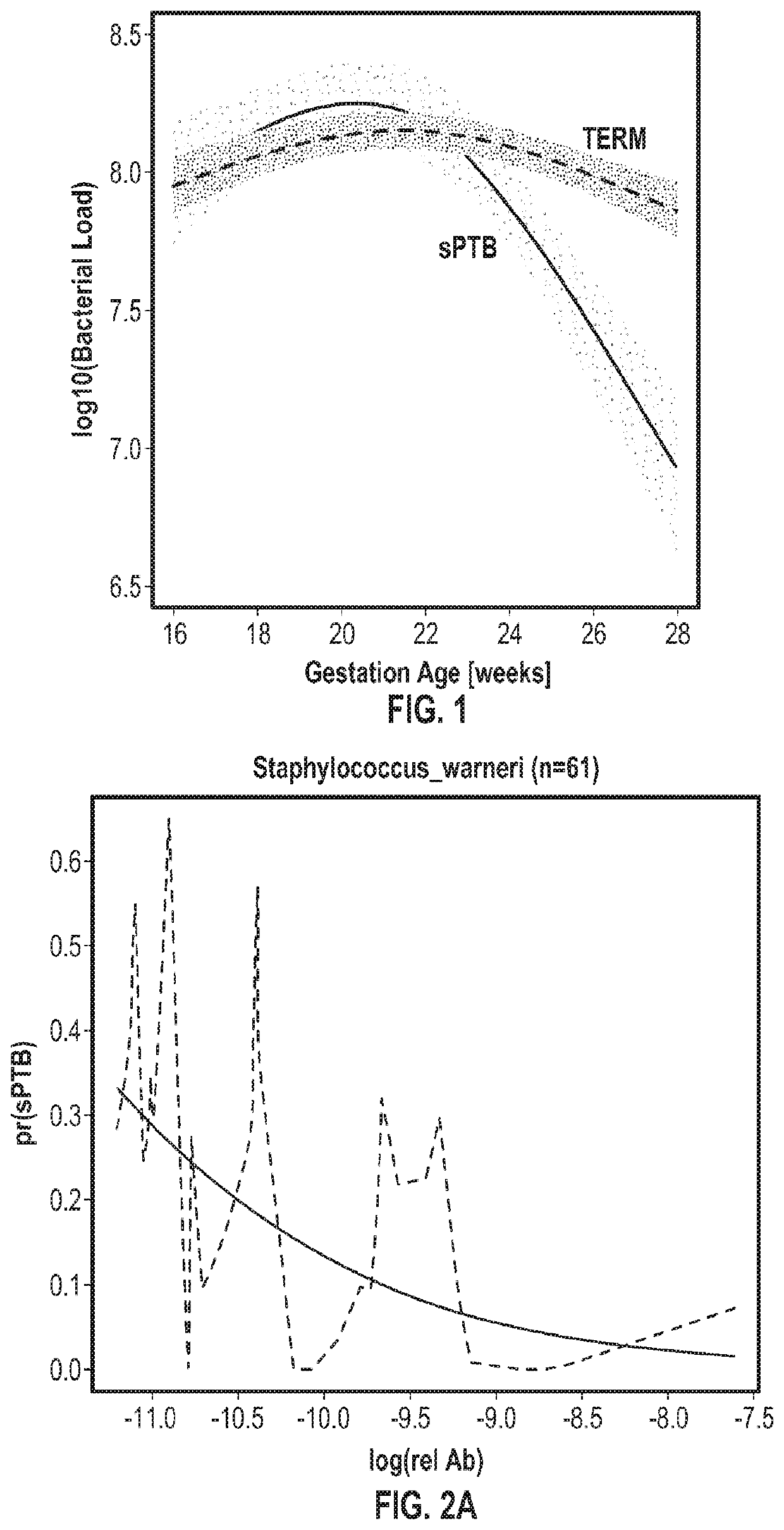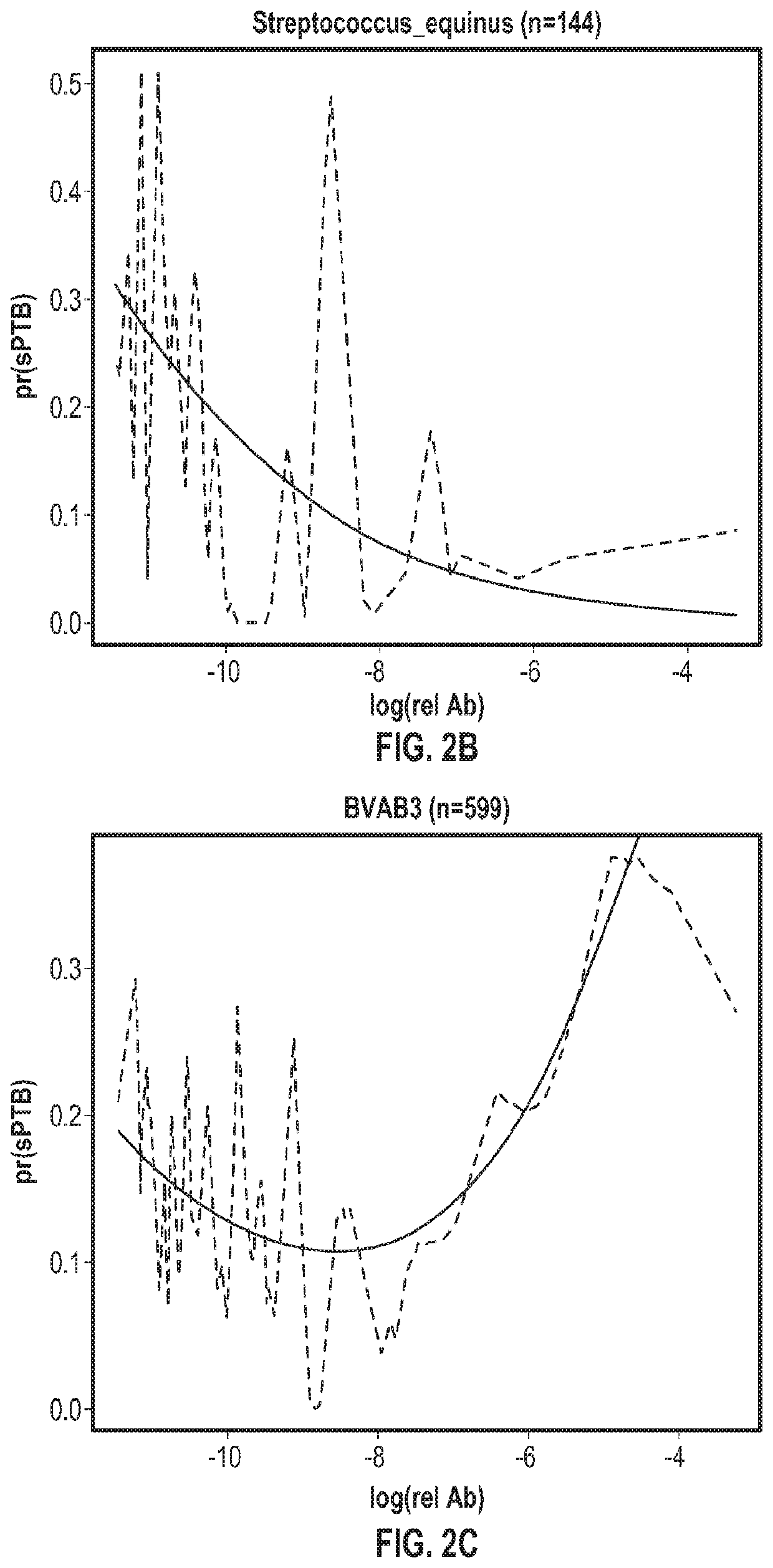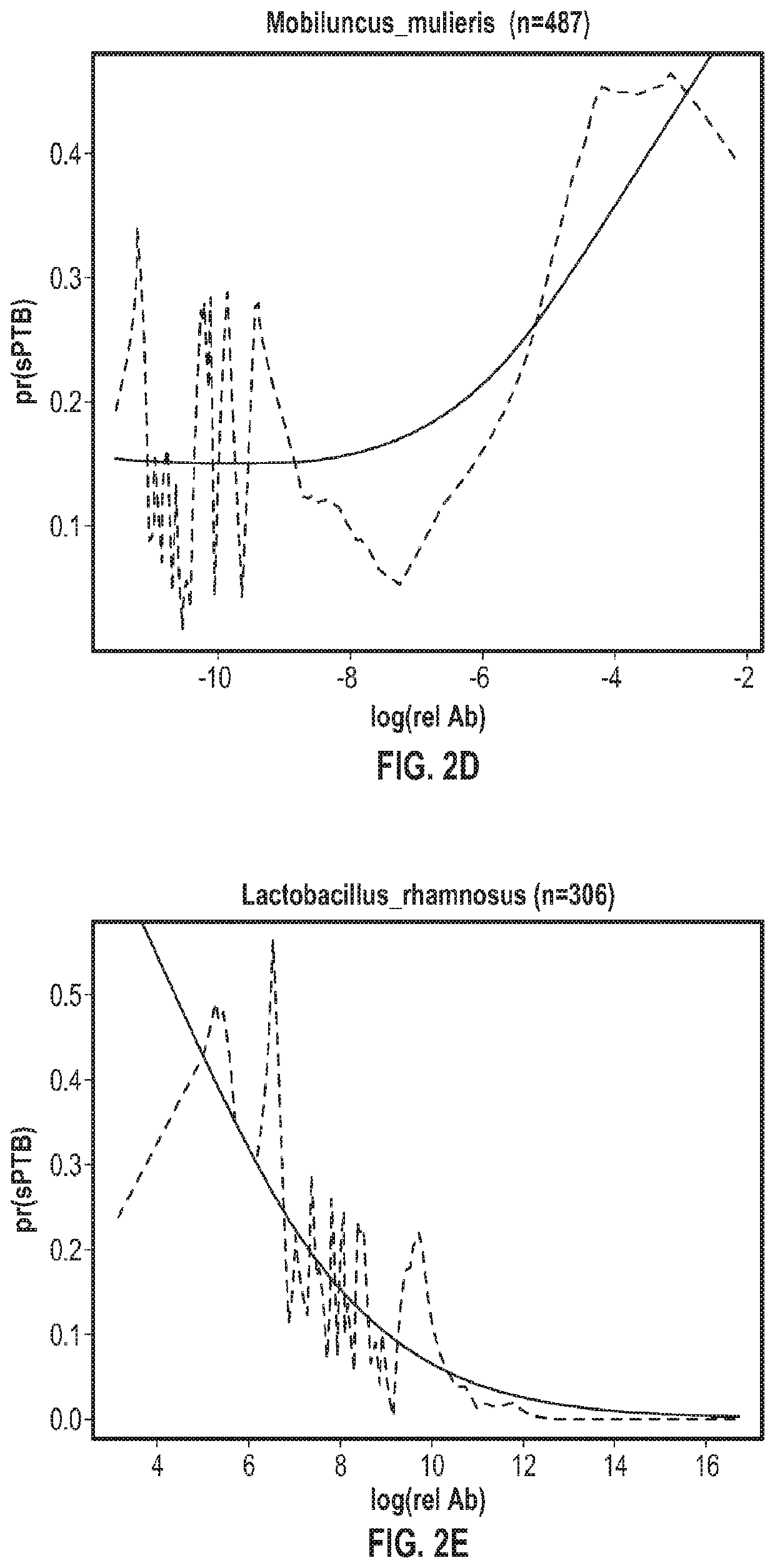Compositions and methods for predicting risk of preterm birth
a technology of preterm infants and prenatal risk, applied in the field of preterm infant risk prediction, can solve the problems of extreme cost of ptb, affecting the health of children, and consuming a significant proportion of the care of preterm infants
- Summary
- Abstract
- Description
- Claims
- Application Information
AI Technical Summary
Benefits of technology
Problems solved by technology
Method used
Image
Examples
example 1
Microbiota in the Cervicovaginal Space are Associated with Spontaneous Preterm Birth
[0240]Changes in microbial communities have been implicated in both health and disease. Investigations into the association between the cervicovaginal (CV) microbiota and spontaneous preterm birth (sPTB) have been limited in scope and number. This study sought to assess if longitudinal cohort of pregnant women and then to perform validation in a 2nd prospective cohort.
[0241]A prospective cohort of singleton pregnancies was enrolled (“M&M”, n=1500). Biospecimens were collected at 3 time points in pregnancy (16-20 (V1), 20-24 (V2), 24-28 (V3) weeks). All cases of PTB were adjudicated by the principal investigator (PI). From the larger cohort, a nested case-control was performed with 80 SPTB cases and 320 term controls that were frequency matched by race to the cases. 16S rRNA gene analyses were performed to characterize the composition and structure of the CV microbiota. The effect of bacteria was quan...
example 2
ng Low and High Risk Cervicovaginal Microbiota with Antimicrobial Peptides to Identify Those Women at Greatest Risk for Spontaneous Preterm Birth
[0245]Cervicovaginal (CV) microbial communities may interact with specific immune responses that change the cervical epithelial barrier leading to premature cervical remodeling and spontaneous preterm birth (SPTB). We investigated if presence / absence of certain microbiota alters the relationship between antimicrobial peptides (amps) and risk of SPTB.
[0246]CV biospecimens were collected in a prospective cohort of singleton pregnancies (“M&M”; n=1500). Using biospecimens at 16-20 weeks, a nested case-control study of 83 cases of confirmed sPTB and 83 race-matched term controls was performed. Four bacteria (Bifidobacterium breve (BB), Bifidobacterium longum (BL), BVAB3, and Mobiluncus mulieris (MM)) were examined with quartiles of four amps (SLPI, IL-1ra, Beta defensins, and Hyaluronidase (HA)). Odds of sPTB were estimated using logistic regre...
example 3
teria Load
[0249]Total bacterial load (absolute abundance of all bacteria) as a function of gestation age was measured (FIG. 1). There was a significant decrease in the total bacterial load in the second part of gestation in sPTB subjects.
[0250]Table 4 below shows the microbes with greatest effect on PTB at 16-20 weeks. See also FIG. 6.
TABLE 4Maximum change of sPTB risk over all visits with the corresponding p and q-valuesfor species with significantly non-zero effect size (q-value significance level0.05) and the amplitude of the effect size of at least 0.1 are shown.gEffp-valq-valn(TERM)n(sPTB)−mode(log10(RA))Sneathia sanguinegens0.198600273(173)64 (46)3.885Mobiluncus curtisii mulieris0.466300407(240)84 (56)3.954g Megasphaera0.39621.848e−104.3434e−09111(76)38 (28)2.94BVAB30.24291.014e−08 1.826e−07104(76)34 (26)4.125Porphyromonas asaccharolytica0.16737.381e−050.001063193(122)38 (30)3.67g Atopobium0.32510.0023560.01885126(81)32 (23)2.4Prevotella buccalis0.10420.0060970.03991211(133)35...
PUM
| Property | Measurement | Unit |
|---|---|---|
| cervical length | aaaaa | aaaaa |
| luminescent | aaaaa | aaaaa |
| chemi-luminescent | aaaaa | aaaaa |
Abstract
Description
Claims
Application Information
 Login to View More
Login to View More - R&D
- Intellectual Property
- Life Sciences
- Materials
- Tech Scout
- Unparalleled Data Quality
- Higher Quality Content
- 60% Fewer Hallucinations
Browse by: Latest US Patents, China's latest patents, Technical Efficacy Thesaurus, Application Domain, Technology Topic, Popular Technical Reports.
© 2025 PatSnap. All rights reserved.Legal|Privacy policy|Modern Slavery Act Transparency Statement|Sitemap|About US| Contact US: help@patsnap.com



